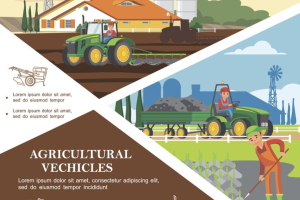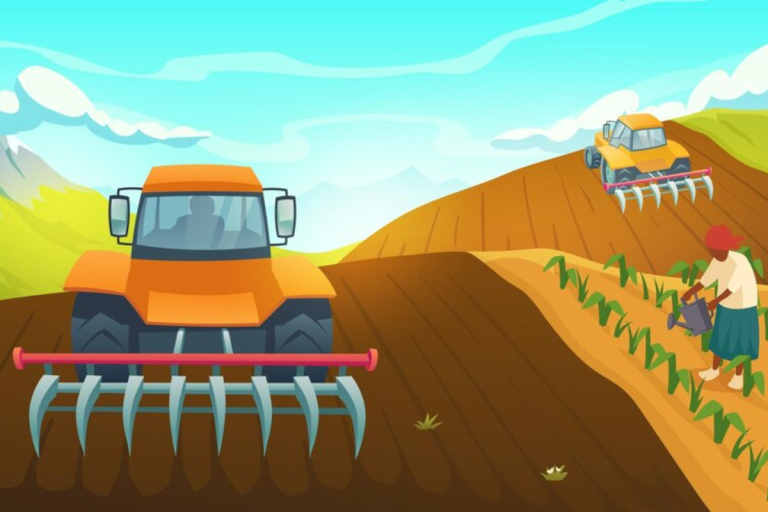Introduction
Concurrent tillage is a modern farming method that combines multiple soil cultivation tasks in a single pass, saving time and effort while improving soil health. Unlike traditional tillage, this technique uses innovative tools and machines to perform simultaneous soil cultivation, such as loosening the soil, planting seeds, and adding fertilizers. Farmers prefer concurrent tillage because it prevents soil erosion, boosts nutrient retention, and helps crops grow better. This method is ideal for sustainable farming, reducing the need for extra equipment and fuel, which also helps protect the environment.
By using techniques like strip-tillage and vertical tillage, farmers can enhance productivity while keeping the soil rich and healthy. Whether you’re a small farmer or manage a large field, concurrent tillage offers a smarter way to care for the land. Adopting this approach supports better yields and ensures sustainable farming for the future.
Read More: Jerusalem Artichokes – Loved By Bees, Good To Eat, But Be Warned
What is Concurrent Tillage?
Concurrent tillage is a special farming method where farmers do many soil tasks all at once. Instead of doing each job separately—like plowing the field one day and planting seeds the next—they use machines that can do several things in one go. This saves time and helps the soil stay healthy by keeping nutrients in the ground.
By using concurrent tillage, farmers can loosen the soil, plant seeds, and add fertilizers simultaneously. This method helps prevent soil erosion and makes it easier for crops to grow strong and healthy. It’s a smart way to farm that takes care of the land and makes work easier for farmers, supporting sustainable farming practices.
Benefits of Concurrent Tillage
Concurrent tillage offers many benefits that help farmers save time, protect the soil, and grow better crops. By completing multiple tasks like loosening the soil, planting seeds, and adding fertilizer all at once, this method reduces the time and effort needed to prepare fields. Farmers also save money by using less fuel and fewer machines, making concurrent tillage a cost-effective choice.
This method improves soil health by preventing erosion and keeping important nutrients in the ground. It also helps water soak into the soil better, which is great for plants. With techniques like strip-tillage and vertical tillage, farmers can work smarter, not harder, while reducing their environmental impact. Concurrent tillage supports sustainable farming practices by using fewer resources and protecting the land for future generations. It’s a win-win for farmers and the environment, making it an excellent choice for modern agriculture.
Techniques Used in Concurrent Tillage

Concurrent tillage uses smart techniques that let farmers do several jobs on the soil in one go. Popular methods like strip-tillage and vertical tillage are commonly used. In strip-tillage, only narrow strips of soil are tilled, leaving the rest undisturbed. This helps keep nutrients in the ground and protects the soil from erosion. Vertical tillage, on the other hand, uses special tools to break up the soil without turning it over completely. This improves water absorption and makes the soil ready for planting.
Farmers also use mulch tillage, which mixes crop leftovers into the soil to add nutrients and keep it healthy. Some machines even combine planting seeds and adding fertilizer while tilling, making the process faster and more efficient. These techniques make concurrent tillage a smart way to care for the land while saving time and resources. It’s a modern approach that supports sustainable and productive farming.
How Concurrent Tillage Impacts Crop Yields
Concurrent tillage uses smart techniques that let farmers do several jobs on the soil in one go. Popular methods like strip-tillage and vertical tillage are commonly used. In strip-tillage, only narrow strips of soil are tilled, leaving the rest undisturbed. This helps keep nutrients in the ground and protects the soil from erosion. Vertical tillage, on the other hand, uses special tools to break up the soil without turning it over completely. This improves water absorption and makes the soil ready for planting.
Farmers also use mulch tillage, which mixes crop leftovers into the soil to add nutrients and keep it healthy. Some machines even combine planting seeds and adding fertilizer while tilling, making the process faster and more efficient. These techniques make concurrent tillage a smart way to care for the land while saving time and resources. It’s a modern approach that supports sustainable and productive farming.
Concurrent Tillage and Sustainable Farming
Concurrent tillage uses smart techniques that let farmers do several jobs on the soil in one go. Popular methods like strip-tillage and vertical tillage are commonly used. In strip-tillage, only narrow strips of soil are tilled, leaving the rest undisturbed. This helps keep nutrients in the ground and protects the soil from erosion. Vertical tillage, on the other hand, uses special tools to break up the soil without turning it over completely. This improves water absorption and makes the soil ready for planting.
Farmers also use mulch tillage, which mixes crop leftovers into the soil to add nutrients and keep it healthy. Some machines even combine planting seeds and adding fertilizer while tilling, making the process faster and more efficient. These techniques make concurrent tillage a smart way to care for the land while saving time and resources. It’s a modern approach that supports sustainable and productive farming.
Conclusion
Concurrent tillage is a powerful farming method that combines multiple soil preparation tasks into a single step, saving time, energy, and resources. This technique not only improves soil health but also protects the environment by reducing soil erosion and cutting down on the need for chemical fertilizers. Using smart tools and methods like strip-tillage and vertical tillage, farmers can grow healthier crops while taking care of the land for future generations.
By adopting concurrent tillage, farmers can enjoy higher efficiency, better crop yields, and lower costs, making it a smart choice for both small and large farms. It’s a sustainable approach that supports modern agriculture while promoting soil conservation. Whether you’re new to farming or looking to upgrade your methods, concurrent tillage offers a simple yet effective way to improve productivity. Start using concurrent tillage today and take a step towards smarter, greener farming practices.

